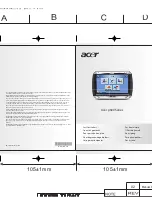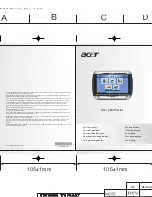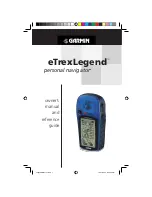
3. OPERATION
The power supply must be led from the
main distribution panel and protected by
means of a 25 amp fuse or current
overload trip switch. A separate 5 amp
fuse must be fitted in the electronic
power supply cable.
Fig.
22
It is very important that both the
electronic and heavy duty power supplies
are isolated by a switch in the positive
supply line.
When connecting the power supplies to
the main distribution panel and to the
course computer spade connectors, it is
essential that the polarity is correct
(Brown positive, Blue negative).
ELECTRONIC
POWER
S U P P L Y
CIRCUIT BREAKER
H E A V Y
P O W E R S U P P L Y
OUTPUT
TO MOTOR
3.1 BASIC PRINCIPLES
The following description of the
principle of
operation will help you to fully understand
its controls.
Deviation from course is continuously
monitored by a sensitive
compass
and corrective rudder is applied by the
drive unit to return the vessel to course.
The applied rudder is proportional to
course error at any time and thus when
the course is restored the rudder will be
The amount of rudder
applied for a given off-course error must
match both the steering characteristics of
the vessel and speed through the water. A
vessel with a small rudder for example,
will require more corrective helm than a
similar sized vessel with a larger rudder.
Similarly, a high speed power boat will
require considerably less corrective helm
at planing speeds than it will at lower
displacement speeds.
When changes in vessel trim occur due
to variations in wind pressure or engine
throttle setting the course can only be
maintained by the application of
permanent
(standing helm)
to restore balance. If permanent rudder
off-set is not applied to restore balance
the vessel will bear on to a new heading.
Under these circumstances the
detects that the original course
is not being restoredand continues to
apply additional rudder off-set in the
appropriate direction until the vessel
returns to the original heading. Automatic
trimming capability ensures that the
originally set course is held irrespective of
any changes in balance that may occur
during the course of a passage.
central
computer also continuously monitors the
pattern of applied rudder correction and
can distinguish unnecessary repetitive
corrections caused by pitch and roll of the
vessel from those necessary to maintain
the selected heading. If unnecessary
repetitive corrections continue the
computer will automatically neglect them
so that autopilot activity and power
consumption is continuously optimised at
minimum levels.
The high degree of control automation
made possible by the system’s central
micro computer simplifies user control to
a series of push button operations.
16
1 7

































